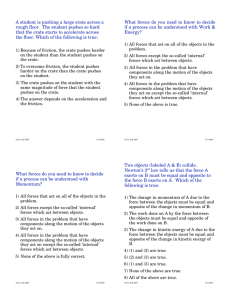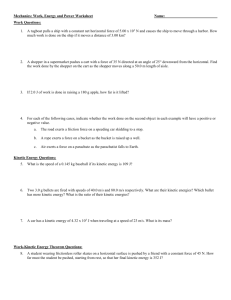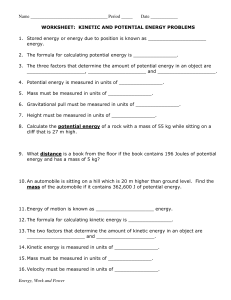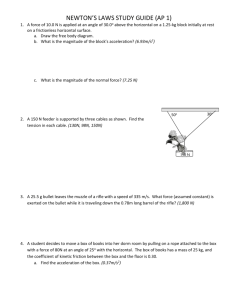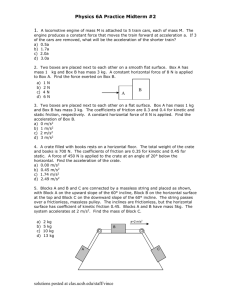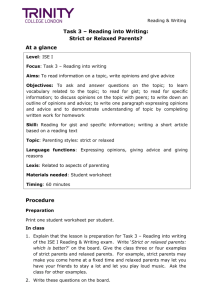tut6a
advertisement
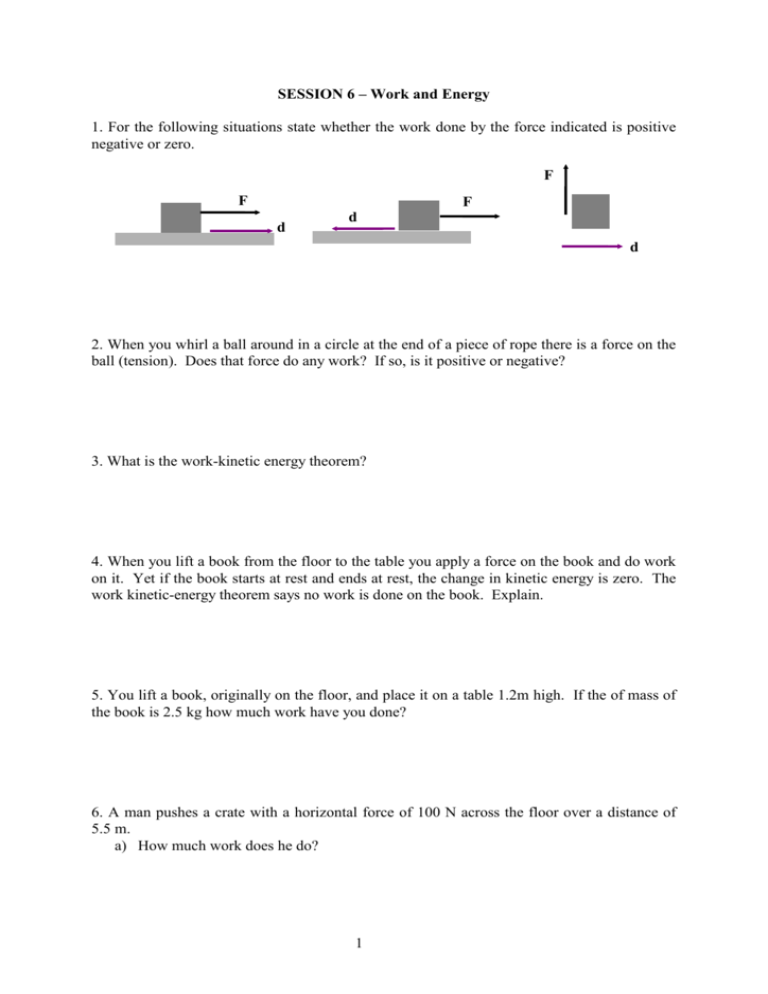
SESSION 6 – Work and Energy 1. For the following situations state whether the work done by the force indicated is positive negative or zero. F F F d d d 2. When you whirl a ball around in a circle at the end of a piece of rope there is a force on the ball (tension). Does that force do any work? If so, is it positive or negative? 3. What is the work-kinetic energy theorem? 4. When you lift a book from the floor to the table you apply a force on the book and do work on it. Yet if the book starts at rest and ends at rest, the change in kinetic energy is zero. The work kinetic-energy theorem says no work is done on the book. Explain. 5. You lift a book, originally on the floor, and place it on a table 1.2m high. If the of mass of the book is 2.5 kg how much work have you done? 6. A man pushes a crate with a horizontal force of 100 N across the floor over a distance of 5.5 m. a) How much work does he do? 1 b) If he now pushes with the same magnitude of force but at an angle of 30° to the horizontal, how much work does he do (over the same distance)? 7. A bricklayer lifts 1000 bricks each of mass 2.5 kg over a height of 1.2 m. How much work does he do on the bricks? 8. A boy pushes a crate of mass 35kg up an incline of 20° with a force of 200 N. He pushes the crate over a distance of 2.0m. a) How much work does he do? b) How much work is done by the normal force? c) How much work is done by gravity? 9. A varying force F acts on a mass. If the force is parallel to the displacement and varies as indicated below, find the work done by the force: a) over the first 4 m. b) over the whole 10 m. 2 F (N) 25 20 15 10 5 0 1 2 3 4 5 6 7 8 9 10 11 d(m) 10. What is Hooke’s law for a spring? What does the minus sign indicate? 11. A horizontal spring with a spring constant of 30 N.m-1 has a mass at the end of it. The spring is stretched by 0.15 m, then by a further 0.30 m. a) Calculate the force required to do this? b) Calculate the work done by the spring in each case. 12. Calculate the kinetic energy of: a) a person of mass 70 kg running at 10 m.s-1 b) a car of mass 1250 kg travelling at 100 km.h-1 c) a Saturn V rocket of mass 2.9 x 105 kg travelling at 11.2 km.s-1 3 13. A branch of mass 5.5kg falls a height of 7.5m to the ground. a) Calculate the work done by the force of gravity on the branch. b) What is the speed of the branch just before it hits the ground? 14. A motor is used to lift an 850kg elevator a height of 110 m. a) How much work is done by the motor on the elevator? b) If the cable snaps and the elevator falls calculate the speed of the elevator just before impact. 15. A mass is at the end of a horizontal spring. The spring is extended 20 cm from its relaxed state and then released. If the spring constant is 50 N.m-1 a) Calculate the work done by the spring in moving the mass from the extended to the relaxed state. b) What is the kinetic energy of the mass when it is released from the extended state? c) What is the kinetic energy as the mass passes the relaxed state? 4 d) What is the speed of the mass as it passes the relaxed state? 16. A mass falls onto a vertical spring of spring constant 2500 N.m-1. The spring compresses by 0.12 m before momentarily coming to rest. While being compressed what work is being done by: a) the force of gravity b) the spring force c) What is the total work done on the mass? d) What is the initial speed of the mass? 5 Student Learning Draw a concept map connecting the ideas from the first five topics. 6

